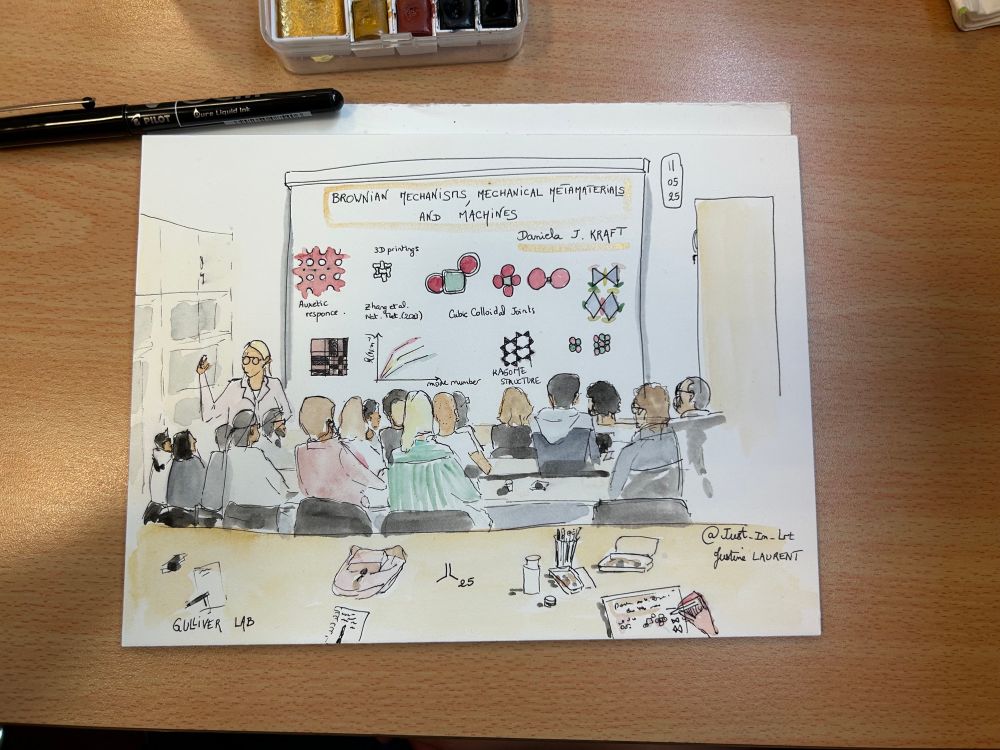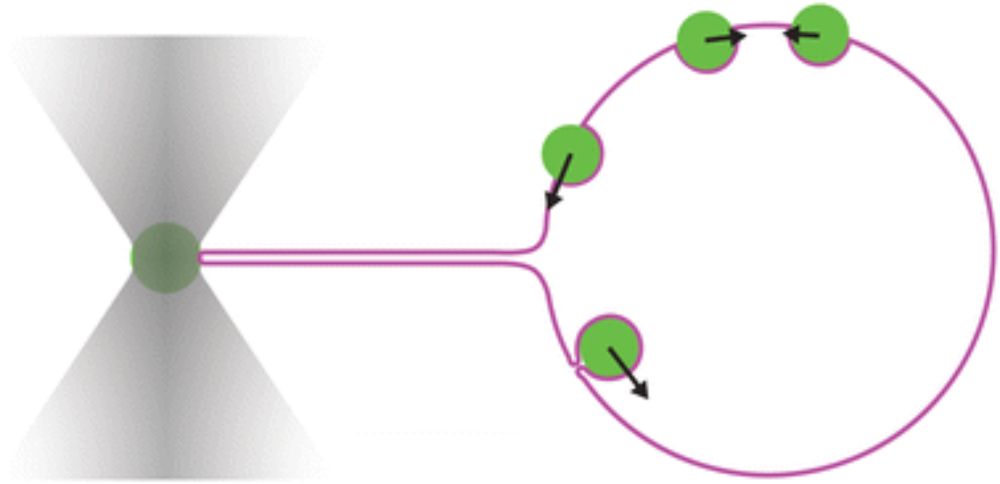#Activematter research by Marine Le Blay, Joshua Saldi & Alexandre Morin from @unileiden.bsky.social published in @natphys.nature.com ! Read more: edu.nl/btmta. @leidenscience.bsky.social #physics
05.08.2025 12:13 — 👍 4 🔁 4 💬 0 📌 0
Cell membranes bend when proteins, viruses or nanoparticles stick to them. Two nearby bends “feel” each other through the lipid sheet, a bit like masses interact through curved spacetime. But do they always attract? We set out to measure that directly.
02.07.2025 08:38 — 👍 4 🔁 1 💬 2 📌 0
It was a pleasure to give the talk, and such a lovely present to receive this amazing drawing! Thank you @gulliver-lab.bsky.social
14.05.2025 14:32 — 👍 0 🔁 0 💬 0 📌 0

It was a huge pleasure to listen to @danielajkraft.bsky.social yesterday.
Her talk was about ´Brownian mechanisms mechanical metamaterials and machines’.
She is an invited professor on the Paris Science chair.
@cnrs.fr @espciparispsl.bsky.social @justinlrt.bsky.social #liveSketching
13.05.2025 09:32 — 👍 8 🔁 2 💬 1 📌 0
ASST PROFESSOR | U-M Careers
I know it's crazy timing, nuts but Michigan Biophysics is hiring on the tenure track! App deadline is May 15. Join our interdisciplinary community. careers.umich.edu/job_detail/2...
01.04.2025 00:21 — 👍 10 🔁 15 💬 0 📌 0




